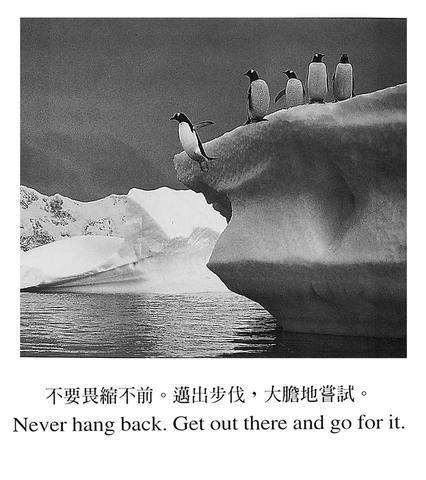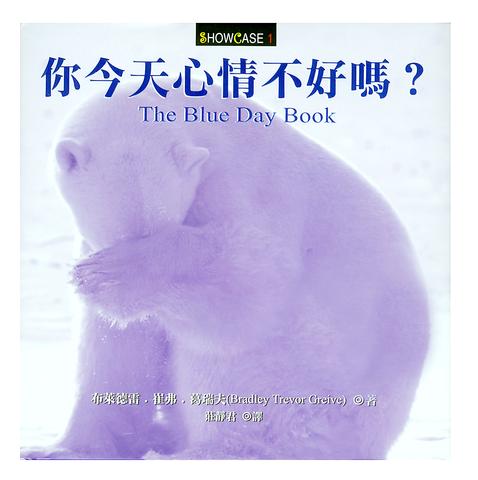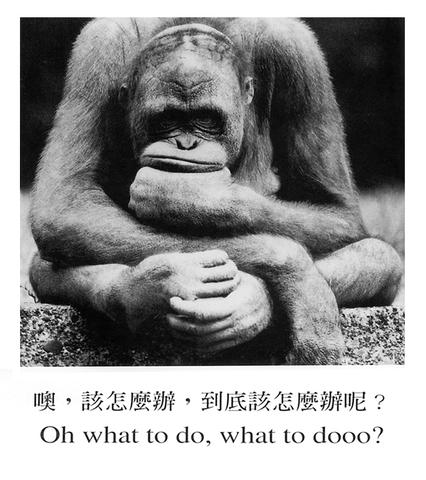It's hard to picture the clean-cut, soft-spoken and easygoing Australian author Bradley Trevor Greive toting the latest in NATO-issue hardware. After all, the contents of his series of bestselling heart-warming illustrated narratives -- The Blue Day Book, Dear Mum and Looking for Mr Right -- are relaxing, thought provoking and most un-war-like.
Until the early 1990s, however, the mild-mannered Greive was a heavy weapons specialist in command of a paratroop rifle platoon in the elite Australian airborne battalion, 3RAR. However odd it may sound, this military background was, according to the author, one of the main driving forces behind the concept that has seen him sell roughly two million copies of his books worldwide to date.

"You learn to survive in the paras with a sense of humor. It might be a bit of a masochistic type of humor, but you learn to deal with whatever is thrown at you through humor," Greive said. "Which, after all, is not that far removed from how we deal with life in general." After leaving the army Greive did a brief stint as a cartoonist with the Sydney Morning Herald. There he tamed his rather brash military humor and went on to enjoy success with a series of cartoons that depicted famous and infamous people at moments during their childhood.

PHOTO COURTESY OF HUANG PUBLISHING
On leaving the newsroom to concentrate on his own projects and find a suitable publisher, Greive soon found that getting a book published was not quite the easy task he'd initially expected it to be.
"When I quit the newspaper business my life took a downturn. I'd had manuscripts rejected by about 30 Australian and 10 US publishers and was feeling pretty down about life in general," he continued. "The idea for the book came to me after I wrote a line of poetry in a cafe in Sydney while feeling blue."

After penning the sentence "the world turns gray and I grow tired," adding a picture of a tortoise sleeping on its back and picturing a gray world, Greive suddenly realized that this monochrome way of looking at life was how dogs saw life and they never seemed miserable. And thus was born the concept behind The Blue Day Book, a book of less than 100 pages of photos and even few sentences. It would be another two years before Greive finally saw his concept in print.

The wait was worth it, however. Less than six months after The Blue Day Book was published, Greive's collection of photographs of animals with human characteristics found itself not only in the number one position on Australia's bestseller list, but had also made the number seven slot on The New York Times' bestseller list.
Since the phenomenal success of his first photo narrative, The Blue Day Book in 2000, the former paratrooper has moved as far away from satire as is possible. The most celebrated of all antipodean writers, both at home and overseas now concentrates on a more easily appreciated and mellow style of humor. His style is now far less reliant on satire and is instead aimed at everyday folk and their thoughts apropos to love and life regardless of gender or race.

PHOTO COURTESY OF FNAC
"The books are fun. There's nothing special to them and they don't preach, which is one of the reasons I guess they've been so successful in so many parts of the world," he continued. "They put suggestions forward and people see themselves or their friends in the images."
Filled with heart-warming anecdotes and observations of life, the books that have made Greive a household name from Tokyo to Rio have now been translated into half a dozen languages.
While his books continue to make bestseller lists the world over; there have been a few hiccups. The most notable of which has been the omission of photo credits on the Taiwan and Brazilian publications of his works.
"This is a problem that has occurred in two places and one that will be put right when I've spoken with my publisher," Greive said. "On all other copies there are photo credits and it is explained where each photograph originally came from." Another problem that Greive has found himself with is the categorizing of his works. According to the author, he's discovered his books in self-help, children's, humor and even philosophy sections of bookstores. Not that the miss-labeling or missing photo-credits has Greive that worried, as he reckons the three reasons behind the global popularity of his books will continue to ensure their success regardless of category of credits.
"It's simply a case of simplicity, poetry and, of course, a good dose of humor."

This month the government ordered a one-year block of Xiaohongshu (小紅書) or Rednote, a Chinese social media platform with more than 3 million users in Taiwan. The government pointed to widespread fraud activity on the platform, along with cybersecurity failures. Officials said that they had reached out to the company and asked it to change. However, they received no response. The pro-China parties, the Chinese Nationalist Party (KMT) and Taiwan People’s Party (TPP), immediately swung into action, denouncing the ban as an attack on free speech. This “free speech” claim was then echoed by the People’s Republic of China (PRC),

Exceptions to the rule are sometimes revealing. For a brief few years, there was an emerging ideological split between the Democratic Progressive Party (DPP) and Chinese Nationalist Party (KMT) that appeared to be pushing the DPP in a direction that would be considered more liberal, and the KMT more conservative. In the previous column, “The KMT-DPP’s bureaucrat-led developmental state” (Dec. 11, page 12), we examined how Taiwan’s democratic system developed, and how both the two main parties largely accepted a similar consensus on how Taiwan should be run domestically and did not split along the left-right lines more familiar in

Specialty sandwiches loaded with the contents of an entire charcuterie board, overflowing with sauces, creams and all manner of creative add-ons, is perhaps one of the biggest global food trends of this year. From London to New York, lines form down the block for mortadella, burrata, pistachio and more stuffed between slices of fresh sourdough, rye or focaccia. To try the trend in Taipei, Munchies Mafia is for sure the spot — could this be the best sandwich in town? Carlos from Spain and Sergio from Mexico opened this spot just seven months ago. The two met working in the

Many people in Taiwan first learned about universal basic income (UBI) — the idea that the government should provide regular, no-strings-attached payments to each citizen — in 2019. While seeking the Democratic nomination for the 2020 US presidential election, Andrew Yang, a politician of Taiwanese descent, said that, if elected, he’d institute a UBI of US$1,000 per month to “get the economic boot off of people’s throats, allowing them to lift their heads up, breathe, and get excited for the future.” His campaign petered out, but the concept of UBI hasn’t gone away. Throughout the industrialized world, there are fears that